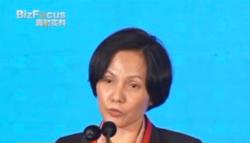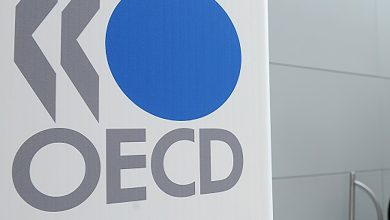Applying China's new development philosophy in reform and opening-up


<img src='https://news.cgtn.com/news/2024-07-22/Applying-China-s-new-development-philosophy-in-reform-and-opening-up-1vq4VPMfTkA/img/efd7347d346d4c6a9994c0fbfea5403a/efd7347d346d4c6a9994c0fbfea5403a.png' alt='A night view of the Lujiazui riverfront, Shanghai, July 18. /CFP'
Editor’s note: Jin Siyuan is a researcher at the Research Center for Marxism Theory Innovation and Communication at Zhejiang University. The article reflects the author’s opinions and not necessarily the views of CGTN. It has been translated from Chinese and edited for brevity and clarity.
Reform and opening-up are crucial tools for the Communist Party of China (CPC) and the people to make great strides to keep up with the times.
The third plenary session of the 11th Central Committee of the CPC initiated an epoch-making new period of reform, opening-up and socialist modernization.
The third plenary session of the 18th Central Committee of the CPC historically launched a new journey of comprehensively deepening reform and advancing reform with systematic and holistic design in the new era, creating a new landscape for China’s reform and opening-up.
The third plenary session of the 20th Central Committee of the CPC adopted the “Resolution of the Central Committee of the Communist Party of China on Further Deepening Reform Comprehensively to Advance Chinese Modernization (hereafter referred to as the resolution),” historically initiating a new journey of further deepening comprehensive reform and promoting Chinese modernization.
This marks a new milestone in the history of the CPC.
The new development philosophy is a scientific approach that ensures the continuous and healthy development of the Chinese economy and society, and offers guidance that has an overall, fundamental and long-term impact.
Since the 18th National Congress of the CPC, China has continuously made new accomplishments in high-quality development, fully demonstrating the guiding role of the new development philosophy.
As China embarks on this new journey, it must fully, accurately and comprehensively apply the new development philosophy and consistently steer the reform and opening-up in the new era with the intrinsic unity of innovation, coordination, green development, opening-up and sharing.
The aforementioned resolution presents a defining feature of overall advancement with a focus on key priorities in its major reform arrangements.
It makes systematic arrangements for reforms in the economic, political, cultural, social and ecological conservation systems, as well as in national security, defense and the armed forces, and in the institutional framework for party building, systematically laying out plans for reforms in all areas to advance them with a holistic viewpoint.
This signifies that the CPC has reached a new level of understanding in advancing Chinese modernization.
On the other hand, the resolution places the highest importance on economic system reform, proposing that economic system reform should be the main driving force. This is because the country’s economy is its foundation.
Further deepening economic system reform can effectively push forward reforms and developments in other areas, thus promoting continuous and healthy economic growth.
Oriented toward the future, the resolution proposes that we should “support all-round innovation” and “advance the building of a high-standard socialist market economy … unleash the internal driving forces and creativity of our society as a whole.”
It further notes, “We must fully implement the strategy of invigorating China through science and education, the strategy of developing a quality workforce, and the innovation-driven development strategy, make coordinated efforts to promote integrated reform of institutions and mechanisms pertaining to education, science and technology, and human resources, and improve the new system for mobilizing resources nationwide to make key technological breakthroughs. These efforts will help boost the overall performance of China’s innovation system.”
The resolution also exhibits a salient feature of remaining committed to China’s goals while aiming to solve problems in its important reform deployments.
On the one end, it clearly defines the overall goal of deepening reform comprehensively. Committed to achieving the reform objectives to be accomplished by 2035, such as “building a high-standard socialist market economy in all respects,” it specifically outlines the tasks for the next five years, aiming to “complete reform tasks laid out in the resolution by the time the People’s Republic of China celebrates its 80th founding anniversary in 2029.”
On the other end, it strengthens problem awareness and enhances the relevance and pertinence of reforms. It focuses on resolving bottlenecks that constrain high-quality development, addressing major public concerns that affect social fairness and justice, tackling difficult issues in people’s lives, solving prominent issues in party building and managing risks in various fields.
At this new historical starting point, we must consciously place reform in a more prominent position and further deepen reform comprehensively with a focus on promoting Chinese modernization.
Guided by the new development philosophy, China will lead the reform and opening-up in the new era and advance the great rejuvenation of the Chinese nation in all respects through Chinese modernization.





